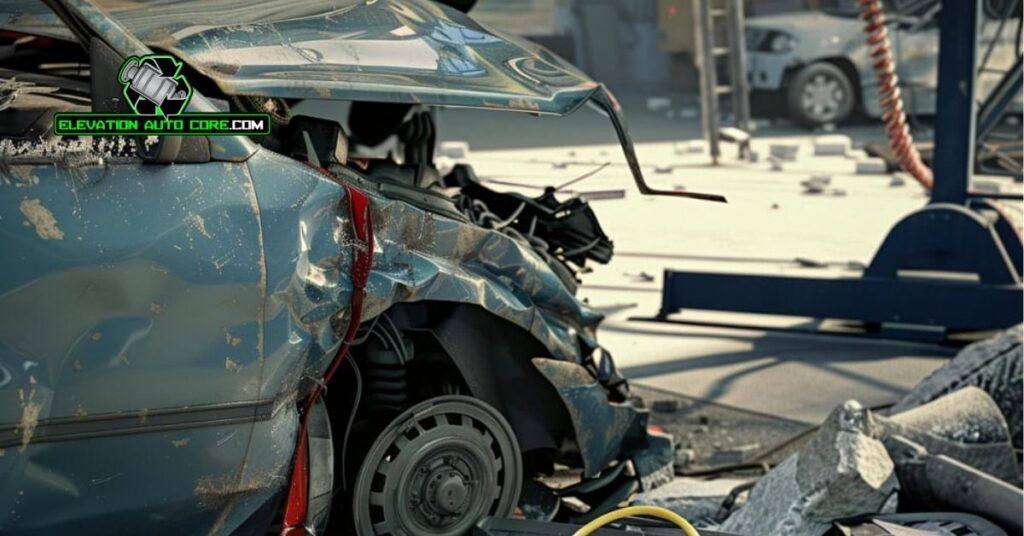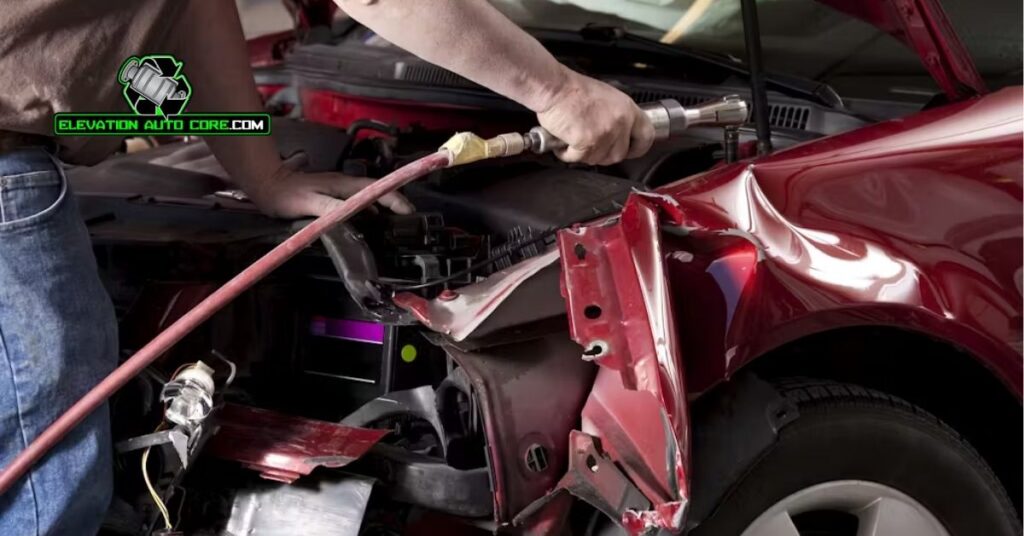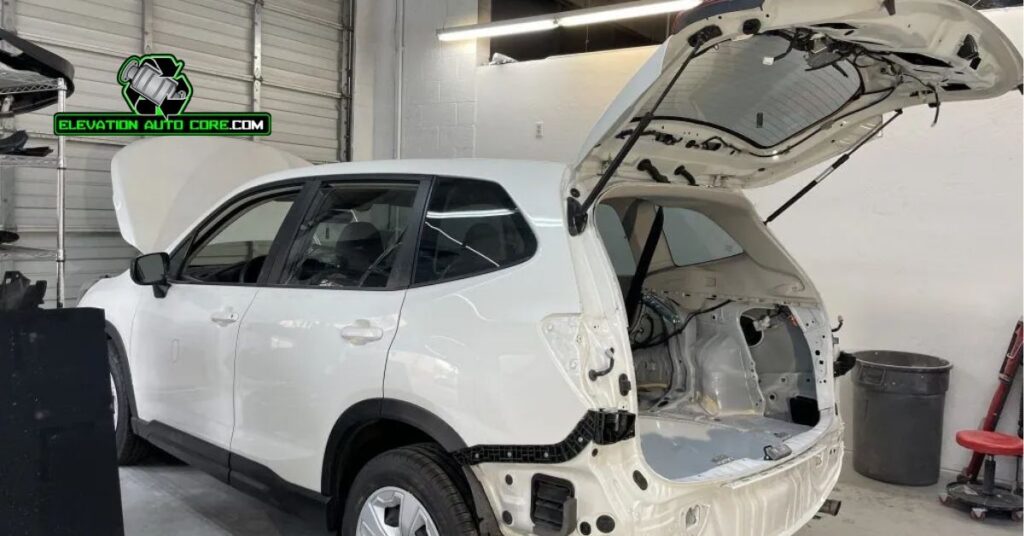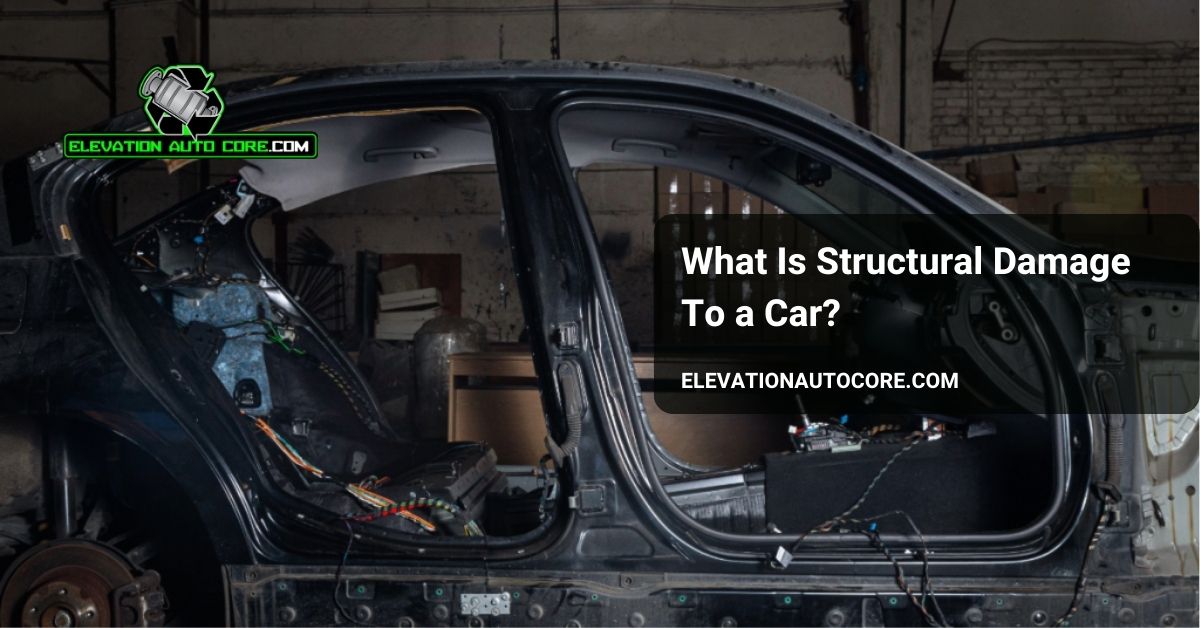What is structural damage to a car, and why does it matter? When your vehicle’s core framework is compromised, it can affect safety, performance, and even resale value. Understanding this type of damage is key to making informed decisions about repairs and whether your car is still roadworthy. Keep reading to learn what counts as structural damage and how it impacts your vehicle.
What Is Structural Damage To A Car?
Structural damage refers to any harm that impacts a vehicle’s structural components, which are essential for its overall integrity and safety. These components include the frame, unibody, and other foundational parts that support the car’s weight and protect occupants during collisions.
Damage to these areas can compromise a vehicle’s ability to mitigate crash forces, putting safety at risk. It often involves issues like bent or cracked frames, misaligned subframes, or weakened weld points. Accidents, improper repairs, and corrosion are common causes of such damage.
A car’s structural system is designed to distribute impact energy evenly if an accident. Any impairment reduces its effectiveness, leading to greater risks for passengers. Diminished structural integrity can also affect the car’s handling, alignment, and performance.
Insurance reports typically identify structural damage through inspections, especially after collisions. Vehicles with structural damage often have a lower resale value, as future buyers and dealerships view them as high-risk investments.
Common Causes Of Structural Damage

Structural damage to a car often results from various conditions that compromise the integrity of its framework. Understanding these causes can help you identify and address potential issues effectively.
Collision Accidents
Accidents involving direct impacts or collisions are the leading cause of structural damage in vehicles. High-speed crashes or even low-impact fender benders can bend the frame or misalign critical structural components. Damaged crumple zones, displaced subframes, and broken welds are common examples resulting from such incidents. Rear-end collisions may also compress parts of the frame, affecting overall alignment and safety.
Weather Related Incidents
Extreme weather conditions can weaken your car’s structure over time. Heavy snow may increase stress on the frame, leading to sagging or deformities. Prolonged exposure to moisture from rain encourages rust formation, especially on steel parts like the floor pan or chassis. Strong winds with debris and hailstorms can cause dents or small cracks, which might spread and jeopardize the structural integrity if neglected.
Poor Vehicle Maintenance
Neglecting regular vehicle maintenance increases the risk of structural deterioration. Failing to treat minor rust spots allows corrosion to spread, eventually eating through essential components. Overloading your car frequently places undue stress on the frame, resulting in warping or permanent damage. Ignoring minor alignment issues, including uneven tire wear, may signal deeper structural problems that worsen over time.
Signs Of Structural Damage

Structural damage to a car often reveals itself through exact indicators. Spotting these signs early can help you assess the extent of the problem and determine the necessary course of action.
Visible Frame Damage
Cracks, dents, or bends in the frame often signal structural issues. Inspect areas like the vehicle’s doors, hood, and trunk for gaps or misalignment, as these could suggest a bent or damaged frame. Uneven paneling or signs of weld marks from previous repairs might also indicate compromised structural integrity. Rust accumulating on critical frame sections further weakens structural components and warrants immediate attention.
Uneven Tire Wear
Irregular tire wear patterns often point toward structural misalignment. If the tires on one side wear out faster or show different tread depths compared to the opposite side, it could mean the frame or suspension is misaligned. Check for feathering or excessive tread wear along the edges, as such patterns can stem from improper weight distribution caused by structural damage. Addressing the root cause can prevent further harm to the vehicle’s internal components.
Difficulty Driving Or Steering
Handling issues when driving may indicate deeper structural damage. If the car pulls to one side even when driving straight, the frame or subframe may be compromised. Vibrations in the steering wheel or unusual noises while turning could also result from warped structural parts or improperly aligned wheels. Difficulty maintaining control or steering smoothly often requires a professional inspection to confirm structural integrity.
Types Of Structural Damage

Structural damage affects critical components of your car, compromising its safety and performance. Understanding different types can help you identify and address damage more effectively.
Front End Damage
Collisions that impact the front end often cause serious structural harm. Damage to the front frame rails or crumple zones can weaken the car’s ability to absorb impact during a crash. Misaligned bumpers or a bent radiator support also indicate structural compromise. Inspect the front suspension and engine mounts if a frontal impact occurs, as these areas are especially vulnerable.
Rear End Damage
Rear end damage commonly results from low-speed crashes but can still have structural consequences. A bent rear frame rail or damaged rear bumper reinforcement affects the vehicle’s integrity. Structural issues in the trunk floor or rear suspension may arise from harder impacts. Always check for gaps around the trunk or uneven panel alignment, which signal rear structural misalignment.
Side Impact Damage
Side impacts typically harm the rocker panels, door pillars, or side frame. This type of damage compromises safety significantly, as these areas distribute crash forces and protect passengers. Misaligned doors or windows often reveal underlying structural issues. Look for bulging or creasing in the body panels along the car’s side when assessing side impact damage.
Roof Damage
Rollovers and heavy falling objects often lead to roof structural damage. Roof pillars and the roof panel itself lose their ability to support the car in case of future accidents. Inspect any distortion, as crushed or bent roof panels dramatically affect the car’s structural integrity. Uneven closing of the sunroof or doors may signal related structural issues.
How Structural Damage Affects Vehicle Safety
Structural damage impacts a car’s ability to protect passengers during a collision. Frames and unibody components are engineered to absorb and distribute crash forces effectively. Damage to these parts increases the risk of injury by compromising this critical safety feature.
You might notice decreased handling precision in a vehicle with structural issues. Subframe misalignment or bent frame sections can cause instability, particularly at higher speeds or during sudden maneuvers.
Airbag deployment operation depends on the car’s structural integrity. If the frame is damaged, sensors may fail to trigger properly during a crash, leaving passengers unprotected.
Weakened structural components reduce a car’s resistance to subsequent impacts. After sustaining damage, the frame’s ability to endure additional forces diminishes, making it more dangerous in future accidents.
Corrosion on structural parts exposes new vulnerabilities over time. Rust often spreads, further weakening load-bearing sections and increasing the chance of part failures during normal use or emergencies.
Insurance companies classify vehicles with structural damage as high-risk. Such cars often receive diminished safety ratings, which directly affect their roadworthiness as well as resale potential.
Repair Options For Structural Damage

Addressing structural damage promptly maintains your vehicle’s safety, performance, and value. Understanding your repair options ensures you make informed choices customized to the extent of the damage.
Repair Or Replace Decision
Situations differ, and choosing between repairing or replacing parts depends on the damage severity. Minor issues, like slightly bent frames, might be repairable using techniques like straightening or welding. Extensive damage, such as severely crushed sections, often necessitates part replacement to restore structural integrity. Consulting a qualified auto repair specialist provides clarity, as they can assess whether repairs meet safety standards. If core structural components, such as the vehicle frame or unibody, are beyond repair, replacement becomes essential to ensure roadworthiness.
Costs And Considerations
Repair costs vary based on damage complexity, vehicle type, and repair methods. Straightforward frame repairs can cost between $500 and $1,000, while replacing major structural components may exceed $10,000. Labor expenses significantly influence total costs, especially for high-end vehicles requiring specialized equipment. Factor in additional expenses, such as realignment services or repainting, which often accompany these repairs. Insurance may cover part of the costs if the damage resulted from an accident, but you should verify policy specifics. Considering resale value impacts is also crucial, as even properly repaired structural damage can decrease a car’s market appeal.
Conclusion
Understanding structural damage to a car is crucial for maintaining safety, performance, and value. By staying vigilant for signs of damage and addressing issues promptly, you can ensure your vehicle remains roadworthy and reliable. Whether you’re dealing with repairs or considering a purchase, knowledge about structural integrity empowers you to make informed decisions that prioritize safety and long-term investment.

